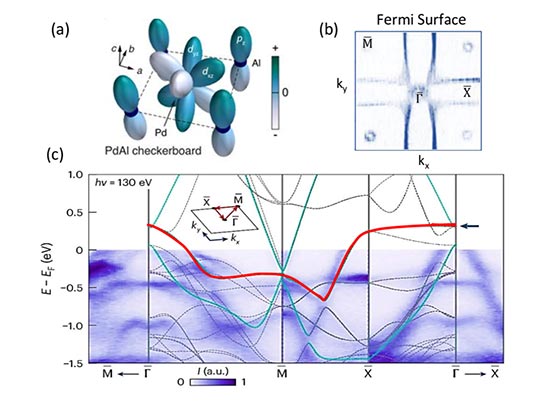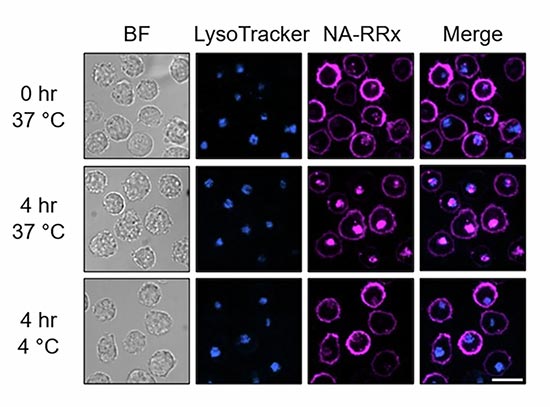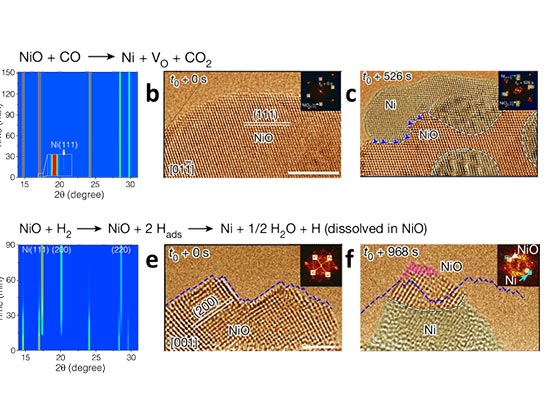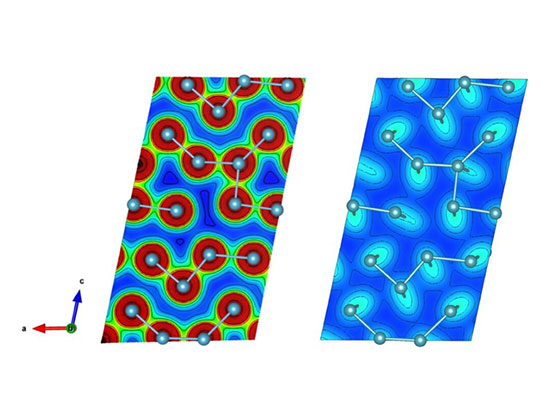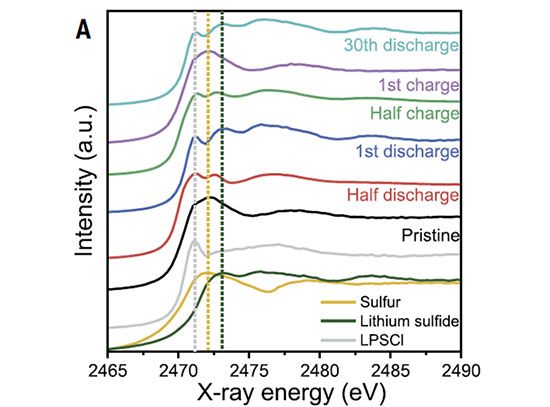Illuminating Desalination Membranes
Researchers revealed the molecular structure of membranes used to purify seawater into drinking water by using ultrabright x-rays
March 31, 2019
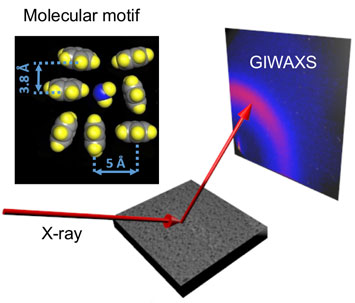 enlarge
enlarge
The sketch shows x-rays scattering from the membrane surface into a detector to create a GIWAXS image. The top left panel shows two different molecular scale packing motifs. GIWAXS results suggested the perpendicular motif (lower right) is correlated with superior filtration properties.
The Science
Scientists revealed the molecular structure of polymer membrane materials that are similar the barrier layers used in reverse osmosis (RO) water purification membranes.
The Impact
RO is the leading method of converting seawater into potable water, and it is used to make about 25,000 million gallons of fresh water a day, globally, according to the International Water Association. Therefore, understanding the polymer structure of membranes and its correlation with filtration properties will aid in the development of more efficient membranes.
Summary
For the first time, researchers have revealed the molecular structure of membranes used in reverse osmosis. Reverse osmosis is the leading method of converting brackish water or seawater into drinking water.
Despite its technological and scientific importance, the molecular structure of the porous polymer materials that are incorporated in to the barrier layer used in reverse osmosis membranes was not previously known. For these measurements, the team made well-defined polyamide barrier layers at the oil/water interface using a method called interfacial polymerization, a process similar to the industrial process used for creating the barrier layers in commercial membranes.
The scientists measured the thickness of the membranes by using x-ray reflectivity studies at the Center for Functional Nanomaterials (CFN), a U.S. Department of Energy (DOE) Office of Science User Facility located at DOE’s Brookhaven National Laboratory. To resolve the molecular structure of the membranes, the team studied the scattering patterns of x-rays using a technique called grazing-incidence wide-angle x-ray scattering (GIWAXS) at the Complex Materials Scattering (CMS) beamline and the Soft Matter Interfaces (SMI) beamline. Both beamlines are part of the beamline suite available at the National Synchrotron Light Source II (NSLS-II), another DOE Office of Science User Facility located at Brookhaven Lab.
In the scattering pattern, the team identified molecular packing motifs, which describe how the neighboring molecules in the polymer are arranged with respect to each other. One packing motif was the parallel motif and the second was the perpendicular motif. Both packing motifs were observed in the same barrier layer; however, the perpendicular packing motif appears to be better correlated with optimal filtration properties.
The scientists’ findings also showed that the molecular structure exhibits a preferential orientation with respect to the membrane surface.
Download the research summary slide
Related Links
Feature Story: “Illuminating Water Filtration”
Contact
Benjamin Ocko
Brookhaven National Laboratory
ocko@bnl.gov
Benjamin Hsiao
Stone Brook University
benjamin.hsiao@stonybrook.edu
Publications
Q. Fu, N. Verma, H. Ma, F. J. Medellin-Rodriguez, R. Li, M. Fukuto, C. M. Stafford, B. S. Hsiao, B. M. Ocko. “The molecular structure of aromatic reverse osmosis polyamide barrier layers”, ACS Macro Lett. 8; 352-356 (2019). DOI: 10.1021/acsmacrolett.9b00077
Funding
The Stony Brook team was supported by the Polymers Program, Division of Materials Research of the National Science Foundation (DMR-1808690). Work carried out at the Complex Materials Scattering (CMS/11- BM) and Soft Matter Interfaces (SMI/12ID) beamlines at the National Synchrotron Light Source II, and the Center for Functional Nanomaterials, is supported by the U.S. DOE Office of Science Facilities, at Brookhaven National Laboratory under Contract DE- SC0012704.
2019-16691 | INT/EXT | Newsroom




